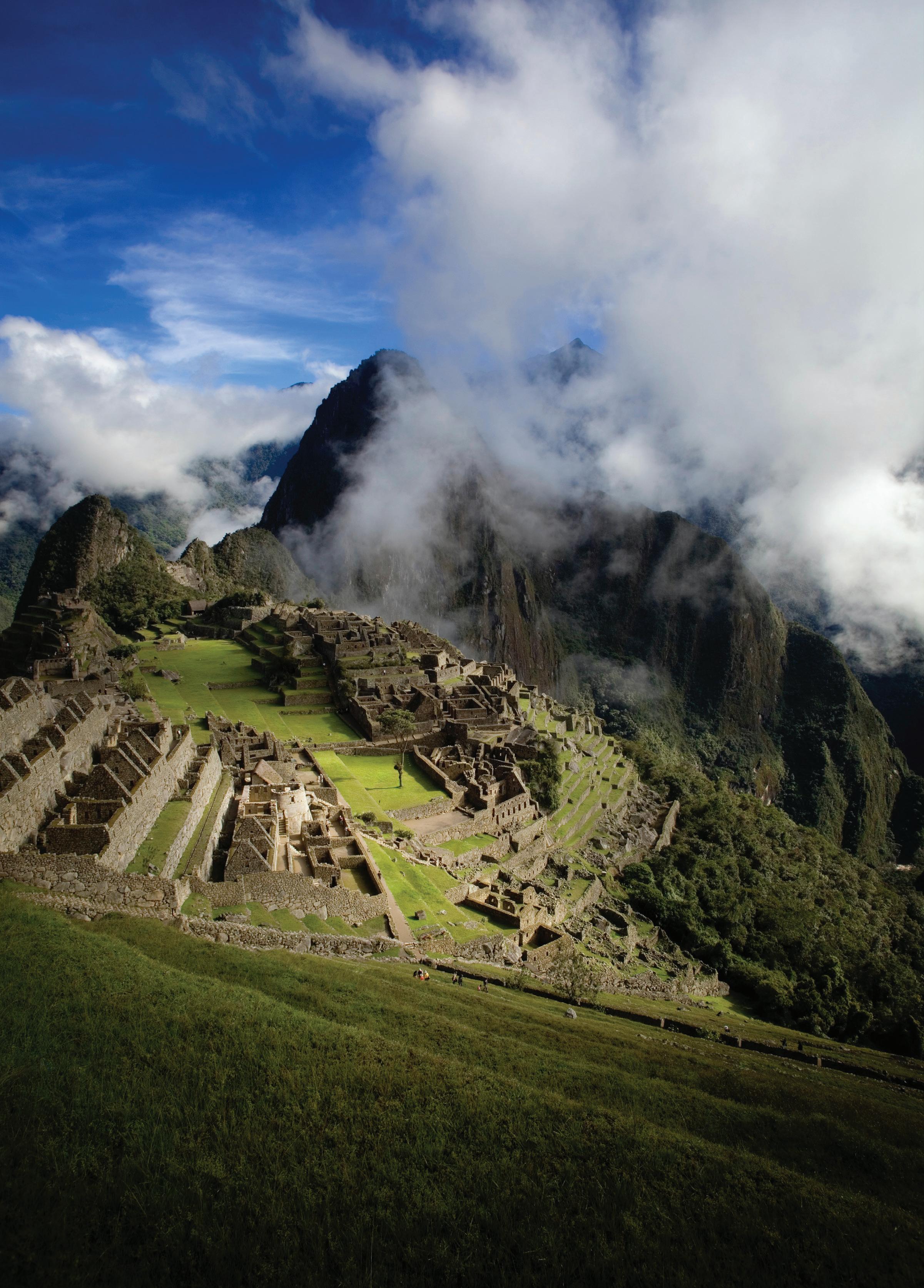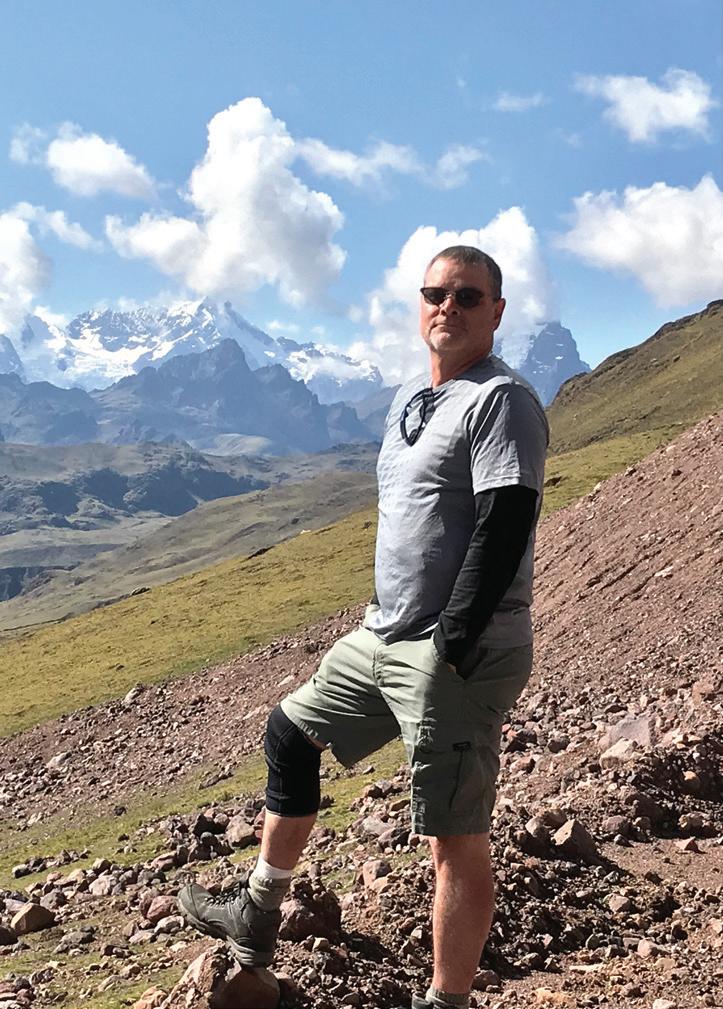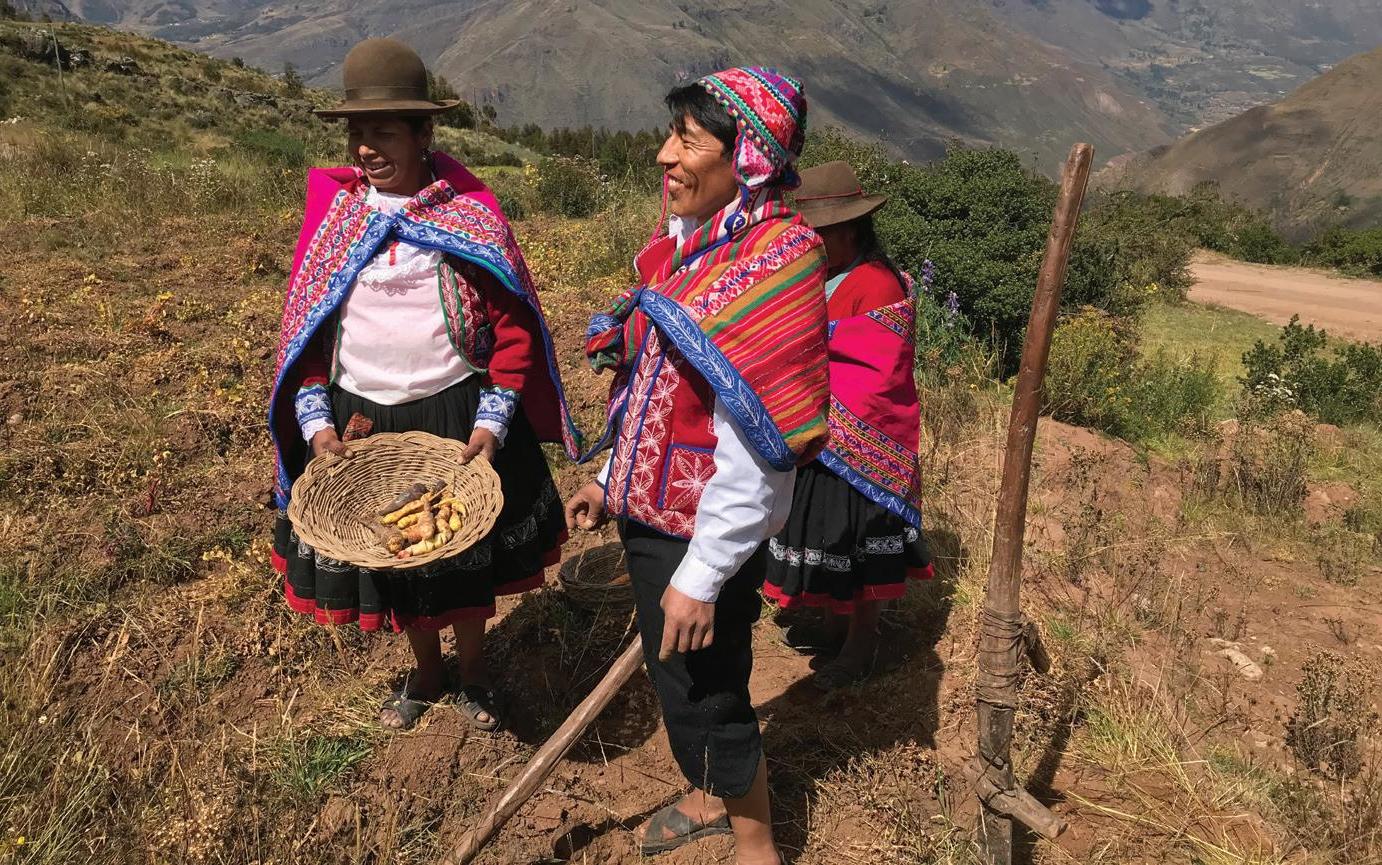
5 minute read
CITY IN THE SKY Exploring the
TRAVELOGUE
Mystic Mountain
A land shrouded in insurmountable beauty, culture, and mystery, Peru’s Machu Picchu is a must-do on your travel destination list.
BY DONALD PADGETT
It’s impossible not to be awestruck upon taking your first steps into Machu Picchu. The sacred city in the clouds is rightly famed for its stunning views, meticulous terracing, precise stonework, spiritual aura, and mysterious origins. Surrounded by peaks covered in the lush green of the rain forest and jutting nearvertically into the sky, the first question that comes to mind is how our fellow human brethren from centuries past were able to accomplish such an astounding feat. Perhaps more pressing in my thoughts, though, were the questions of who and why.
I blame Andres for my predicament. He was my tour guide from Mountain Lodges of Peru, which provides fully customizable packages of five to seven days, with additional stays in Lima and Cuzco. A few nights earlier in the comforts of the Huacahuasi Lodge, a private lodge exclusive to MLP, Andres had given a presentation on stargazing and the archeoastronomy of the Incan empire. We were high in the Andes, above 14,000 feet, and sated after a meal featuring locally sourced fish and the obligatory but always welcome pisco sour. His lecture was intriguing. Machu Picchu, Cuzco, and other Incan temples were built on a line in accordance with a series of astronomical alignments. The astronomy upon which the alignment was based is not visible today but graced the sky in the distant past. That Peruvian’s ancient ancestors had the astronomical and architectural prowess to conceive, design, and construct Machu Picchu left me starstruck.
Of course, by now I had come to expect the unexpected with Peru. Here I was high in the outback of the Andes, yet later that night I was relaxing in my room’s private hot tub overlooking a thousand-foot valley and waterfall, framed by jagged mountains higher than the Rockies and


t
Clockwise
Fallen Angel Hotel courtyard; the author in Huacahuasi Valley; Indigenous Peruvians
a glacier slowly grinding yet another topographical masterpiece. Rather than base their itineraries on existing hotels, MLP constructed their own luxury accommodations allowing travelers to venture into areas not visited by other tour companies. Each is unique and stunning. Llamas wandered about the jacuzzi and communal areas of the Lamay Lodge.
Huacahusi Lodge is perched high astride a glacial valley. Individual townhouses featuring full kitchens, private patios, and secluded gardens welcomed us outside the ancient city of Cajamarca. The meals were equally impressive and varied, with every evening offering a multi-course dining experience.
Over lunch with native artisans in the small village of Choquecancha, we learned from locals about how the ancient arts are passed on to future generations. The resident women in attendance wore garments woven from alpaca wool using their own hand looms. This timeless knowledge has been passed down for countless generations but now faces the threat of disappearance within the coming years. To help keep these cultural practices alive, MLP assists the elder women in reaching remote villages to share their ancient knowledge with a new generation.
Travelers might also be surprised at the size and diversity of Peru, from the cosmopolitan capital to the ancient Incan capital of Cuzco and the timeless villages high in the Andes. Nothing exemplifies this mix of old and new, of citizens native and the transplanted, than the capital city of Lima, home to 11 million Peruvians. If Lima is the modern Peru, then Cuzco is its proud grip on the past. This city in the clouds is the heart of the successive Indigenous empires that ruled Peru for over 4,000 years before the arrival of the first Spanish conquistadors. Incan symmetry remains in the the layout and design of the old town. The Spanish built their massive and ornate cathedrals upon the perfectly aligned stone foundations of Indigenous temples. Cuzco is touristy in places, but the history and the altitude will take away your breath.
Our hotel in Cuzco was located in a newly gentrified section of the historic town. The El Retablo Hotel, another MLP-exclusive property, has bright and inviting rooms with hand-painted walls and ceilings. They surround an inner courtyard with small tables and chairs that provide a respite from the 12,700 feet of elevation. Don’t take the altitude lightly. It’s best to spend a night or two in Cuzco to acclimate to it. The local remedy is to chew cocoa leaves constantly and you can buy small bags of the natural stimulants for less than a dollar. Alternatively, check with your physician about a prescription for medicines like Meclizine which can help prevent the headaches associated with altitude sickness.
Cuzco is the gateway to the Sacred Valley and Machu Picchu. It boasts a surprising number of upscale dining options and a gay-friendly restaurant, night club, and hotel, the Fallen Angel, the very definition of eclectic. Most of local establishments welcome queer travelers, though it’s still not advisable for same-sex couples to hold hands in public.
Buses run visitors up and down the mountain to Machu Picchu from the touristy but delightful town of Aguas Calientes. Tip: stay the night at a hotel in town. Daily trains return thousands of tourists back to Cuzco in the midafternoon — leaving the site significantly less crowded around sunset, when one can wander amid the ruins relatively undisturbed. My stay in town was at the Inkaterra Machu Picchu Puebla Hotel, an exquisite property set amid acres of lush rain forest. After a long day with the crowds on the mountaintop, Inkaterra’s private paths, streams, and waterfalls are the perfect setting for a relaxing stroll.
The Andes and Machu Picchu are breathtaking, and I felt privileged to experience cultural and historical immersion and the niceties of luxurious accommodations and unparalleled cuisine. My departure left me anxious to research and return, which is perhaps the best indicator of a journey well-spent.











